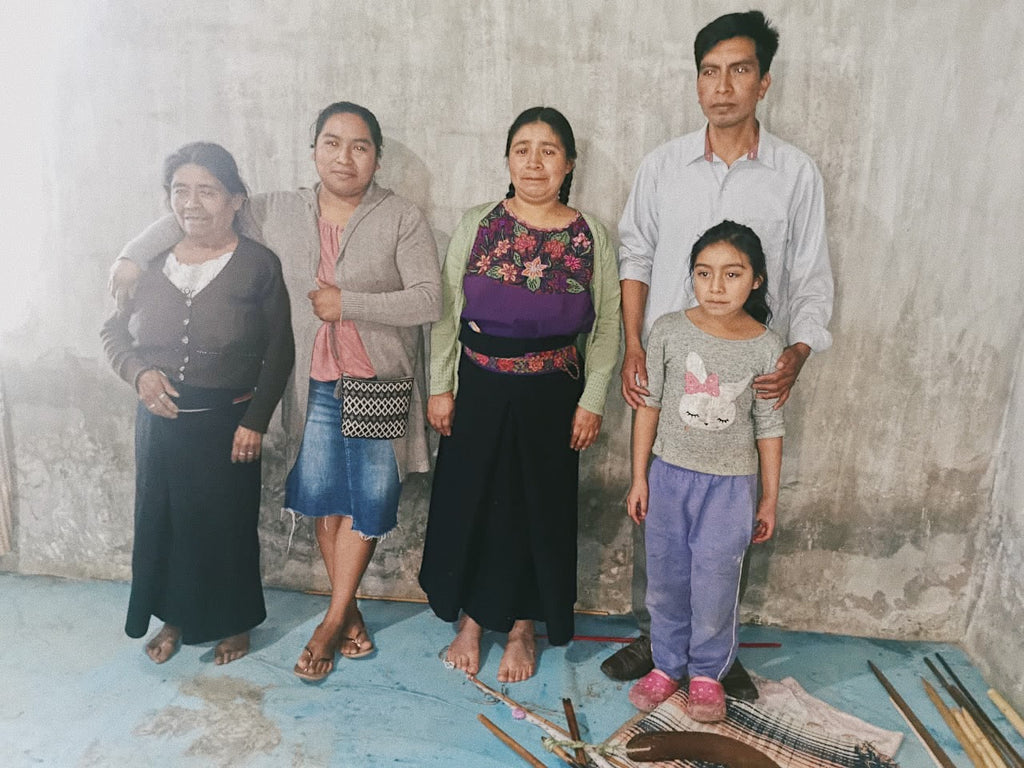Diego Rivera
Weaving is an ancient Mexican craft that dates back to between 900 and 200 BC. Mexican weaving originally began with the weaving of grasses to form baskets for storage and transporting goods using native fibers, such as cotton, cactus, yucca, agave and maguey. The indigenous people then learned to cultivate and process cotton to make cloth. They then made natural dyes for the cloth using insects, plants, minerals, shells, and animals. They created beautiful woven clothing to wear, but also as a means to trade and pay tribute. Oftentimes, the patterns of these woven textile tells a story specific to its geographical significance.
Photo Credits: R. Mata
The first weaving tool used by the indigenous people was the backstrap loom (Telar de Cintura). The weaver would attach one end of the loom to a stationary object (usually a tree), with the other end wrapped around the weaver. When using a backstrap loom, the weaver would sway their body to change the tension on the threads. The width of the cloth is limited to the reach of the weaver, typically creating pieces that are only 26 inches wide. These factors makes it an incredibly time consuming and physically demanding tool loom to operate. A piece could take up to several months to complete.
Art by Lorenzo Cruz Sunu
Unfortunately, since the 1970s the art of weaving has started to decline with the introduction of industrialised machines. The necessity to increase production rates to meet demands of consumers has overshadowed this ancient craftsmanship and heritage.
However, this level of consumption is incredibly wasteful and unsustainable. With the fashion industry being the third most polluting industry in the world, something has got to change.
We want to be a part of the preservation of Mexico's precious cultural heritage and ancient techniques of craft.
We want to create clothing that are not only beautiful, but high-quality. And at the same time, introduce a slower consumption rate and the beauty of sustainable production.
The Loom Collection is a new approach to the way you think about clothing – one that promises to be more thoughtful and closer to the origins of the product. We hope to create a community that will focus on the importance of sustainable, slow fashion through our pieces.
Introducing the team of weavers (from L-R): Antonia, Laura, Petrona, Porfirio and Lalila Lopez
To achieve this, we've partnered with a community of artisans based in Chiapas, Mexico. Each piece in The Loom Collection is created from handwoven fabric, with every inch of the fabric made by hand. It's a process that requires a lot of physical work (around 3 days to create the fabric piece required to make a garment) but produces some of the most beautiful fabric that you'll ever see.
We released our first collection last year with Lalila, Valentina and Selva and we received so much love and positive feedback form our community! We are happy and proud to introduce the new Carmen and Elisa pattern.
THE LOOM COLLECTION VOL. II
Carmen is the name of our workshop head. The colours of this particular weave remind us of her unwavering positivity and passion. We’ve met very few souls as hardworking and strong as Carmen yet with such a bright and calming persona.
💛💖🧡
Elisa was inspired by our head seamstress in Mexico City. The elegant tones; featuring emerald green, mint, baby pink, and peach represent her commitment to design and her beautiful spirit.
🧡💜💚













